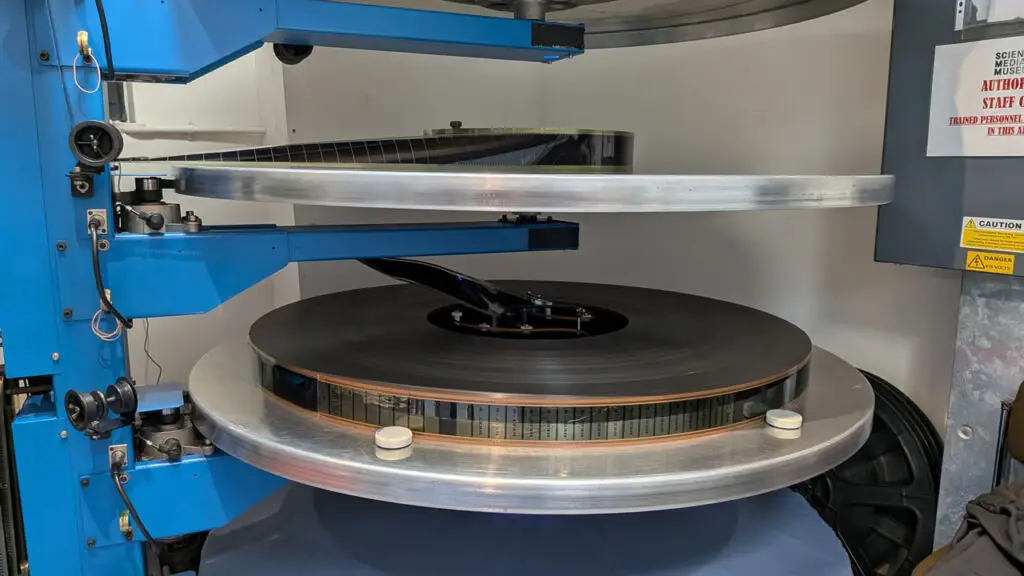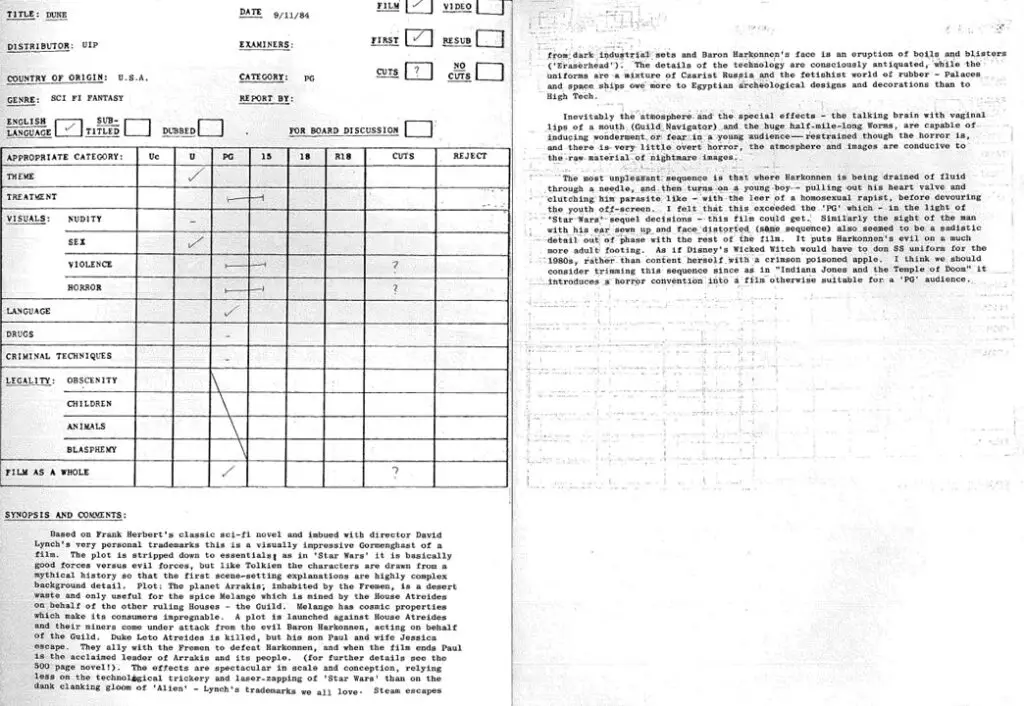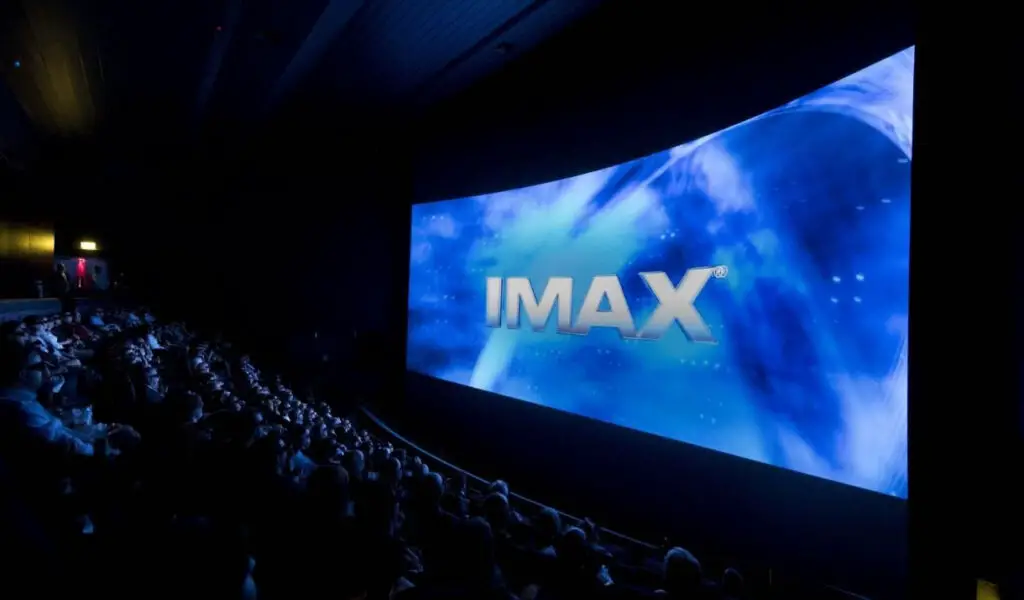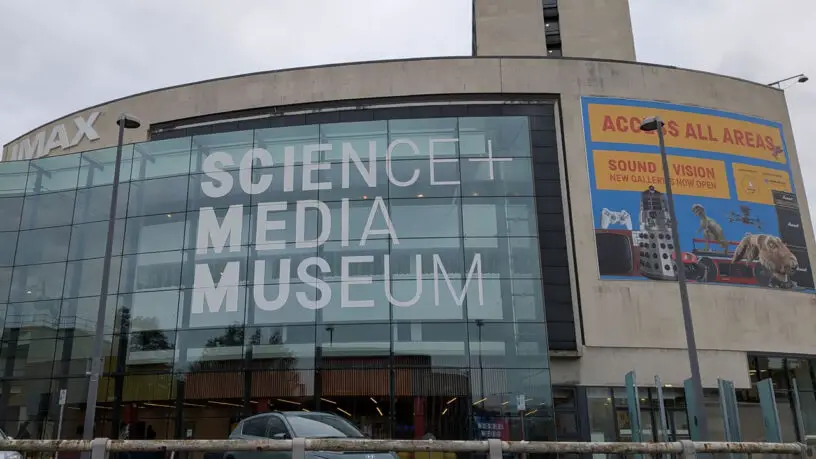While all three Dune movies are available on 4K Blu-rays for viewing at home, nothing beats the experience of watching them on the big screen, and I always try to attend any local screenings.
So I was naturally delighted when not one, not two, but all three Dune movies appeared on the schedule of the Widescreen Weekend Film Festival at Bradford’s National Science and Media Museum; just one train stop away from me, one of my favorite museums, and the location that housed Europe’s first IMAX screen in 1983.
Even better, Lynch’s Sci-Fi classic was shown on a rare 70mm print, and Denis Villeneuve’s movies were part of a back-to-back IMAX double bill. With what I believe to be a unique opportunity to see three Dune movies on the big screen within 26 hours I grabbed a set of tickets, and contacted Jack Wentworth-Weedon, Screen Program Producer at the National Science and Media Museum to learn more about this event.
The festival has been running since 1996, making it one of the longest running film festivals in the U.K., and has cinemas capable of projecting films in IMAX, 35mm, 70mm, and digital 4K. It’s also the only public cinema in the world capable of screening the three-projector Cinerama format.
Each year the festival picks a technical aspect as a thread for many of the films chosen, and 2025 celebrates the 70th anniversary of the Todd-AO format with eight Todd-AO 70mm films included in the programme.
Out of the Todd-AO films, five (The Alamo, Airport, Patton, Those Magnificent Men in Their Flying Machines, and Baraka) were shot on 70mm, and three others (Mad Max, Flash Gordon, and David Lynch’s Dune) were were shot with Todd-AO lenses on 35mm format but also exist in blown-up 70mm versions.
For this year’s festival, Dune (1984) seemed like an obvious choice given the interest in the franchise from the recent films by Denis Villeneuve, and the existence of a Todd-AO 70mm print held in the U.K. by Lionsgate. Dune was picked for the festival prior to the passing of David Lynch in January 2025, making its inclusion more timely, even though it is the one film that the director had distanced himself from over the years.

With one Dune movie in the festival, it seemed natural to include IMAX screenings of both Dune: Part One and Dune: Part Two. The festival marks the first time that the latter movie has been shown at the Bradford IMAX, as the screen was closed for refurbishment when it was originally released in 2024.
Lynch’s Dune (1984)
Lynch’s Dune was the first 70mm presentation of 2025’s festival on Friday, September 26, 2025, and attendees were invited for complimentary drinks and popcorn in Pictureville Bar before the film. While not completely full, the screening was well attended, and was introduced by Jason Wood from the BFI (British Film Institute) who talked about Lynch’s experience making this “flawed movie.”
The movie started with the BBFC (British Board of Film Classification) “PG” certificate, which was the original rating for the movie in 1984, and meant that 37 seconds had been cut to achieve a rating suitable for younger audiences (the “12” rating didn’t exist in the UK until Tim Burton’s Batman in 1989). These cuts focus on the Baron’s assault on the Harkonnen slave, and the final duel between Paul and Feyd. I also noticed some other minor cuts, but these may have been due to print damage. This cuts weren’t obvious, I only noticed as I’ve seen this film countless times and almost know it backwards.

The quality of the image was excellent, with surprisingly few scratches for a 40-year-old print. The audio was also impressive, apart from one section that had a bit of a background speaker hum/click, but that was only noticeable in quieter sections.
Lynch’s Dune is normally shown at an aspect ratio of 2.35:1, and according to IMDb, the 70mm print is at 2.20:1, however from what I was able to note, this film was projected at around 2.0:1, with content from left and right of the image missing. This didn’t impact the enjoyment of the film, and was only noticeable in a couple of scenes, such as the “Secret Report within the Guild” section at the start of the film, with the very edges of a few of the planets being missing.
Dune: Part One and Dune: Part Two
Denis Villeneuve’s Dune movies were screened the next day Saturday, September 27, 2025 as a double bill, starting at 2 p.m., and finishing at 7:45 p.m., with a 25 minute comfort break between the movies. Thankfully, like with Lynch’s Dune, there were no trailers or adverts to interrupt the films, or to add to the amount of time sat in the cinema seats!
The Lynch film had assigned seating, but the IMAX showing of Dune was opening seating. I arrived early to get a good spot within its steep stadium-style arrangement of 200 seats. While the cinema wasn’t full it had a good attendance, and some more people joined for Dune: Part Two.

While the IMAX screenings were digital rather than film, they still are impressive on Bradford’s giant 19.7m x 15.9m (approximately 65ft x 52ft) IMAX screen. The museum only supports the 1.9:1 IMAX aspect ratio for movies, and not the full 1.43:1 ratio, but even so the huge screen fills your view.
Summary
Watching Lynch’s Dune on a big screen is always fun and I enjoyed being able to cross 70mm off the list of formats I’ve seen this “Masterpiece in Disarray” in. The highlight, however, was being able to revisit Dune Part One and Two in full IMAX. The latter home releases are disappointingly restricted to 2.39:1, even though many other movies enjoy the expanded 1.90:1 aspect ratio on 4K discs or streaming services.
I also enjoyed visiting the newly renovated National Science and Media Museum, not just for the movies, but also the museum’s exhibitions and galleries. These are recommended to anyone interested in the history of film and photography.
Thanks to Alice Browne (Senior Press Officer) and Jack Wentworth-Weedon (Screen Program Producer) at the National Science and Media Museum in Bradford, U.K. for their help, and answering all my questions.
About The National Science and Media Museum
The National Science and Media Museum in Bradford, West Yorkshire, opened in 1983, and has since become one of the most visited museums in the U.K., outside of London. It draws on more than three million objects from its national collection to explore the science and culture of image and sound technologies, and their impact on our lives.
The museum creates special exhibitions, interactive galleries, and activities for families and adults. It is home to Pictureville, Yorkshire’s biggest independent cinema with three screens, including Europe’s first IMAX and the only public Cinerama venue in the world.
Learn more at https://www.scienceandmediamuseum.org.uk/



